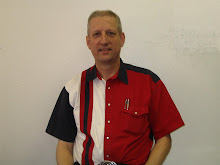At first glance you might think this blog is about some obscure Chinese or Mayan word. Now, really. A Mayan word would start with Dz and probably not end with the "g". Those in the know are aware that the term "Dx" stands for long distance as it applies to ham radio. With a good ham radio capable of operating on frequencies between around 2Mhz to 10Mhz, a licensed operator can make contacts hundreds and thousands of miles away.
Ham radio equipment is not cheap and usually isn't space convenient. Like hospitals and government, a ham shack is usually continually expanding. You generally start with a radio and an antenna. The radio usually needs a separate power supply. Most antennas aren't perfectly adaptable to changing frequencies and an antenna tuner is needed to make the antenna work well. Since operators like to know how much power they are generating they have a separate power meter or one incorporated into the antenna tuner. When hams (a licensed ham radio operator) notice how little power their meter shows they are transmitting, they decide to add a linear amplifier. A linear amplifier increases their signal output from usually about 100 watts up to 1000 watts or more, even though the Federal Communications Commission has rules limiting the output on certain frequencies to much less than 1000 watts.
Hams are always looking for ways to make their antennas higher, longer, thicker, thinner, more directional, more omni-directional and generally more functional. These endeavors lead to greater output...from their wallets and more input from their wives and neighbors. Contrary to the rumors, a properly tuned rig (combination of all ham radio equipment) should not interfere with neighbor's tv reception.
The number of radios in the shack magically multiply. The Dx equipment, for HF (high frequency) radio, is overkill for local communications. Ham operators usually accumulate a variety of radios that include VHF equipment for local to medium range and often UHF equipment for very local communications. Radios range from large base units to mobile units that fit in a vehicle to hand held (HT or handie talkie) units that can be clipped to a belt.
The most important requirement of a ham radio system is the most logical one. You must have someone, somewhere to talk to you. It's not much fun having half of a tin can telephone. It gets really boring really fast. Add the second person component and hams will talk endlessly about to others describing their rig in detail, then letting the other person describe their equipment and layout.
Personnally I prefer to use a radio similar to a telephone. I like to talk to family, friends and others about topics I would discuss over the phone. Why not use a phone, some would ask. When emergencies arise and power is out, hams are usually the voices that are heard through the airwaves coordinating rescue efforts. That standard answer aside, it's just cool to talk over equipment that is not taxed, charged by the minute or impeded in general by someone else.
Currently only one member of my family has a license, Lonehawk. He and I attempted a few times to connect. When we finally established communication, it worked better than we thought it would. Granted, we had to wait till 11pm CDT to do it, but there is something calming about hearing the familiar voice in the darkness that you know is hundreds of miles away. True, the call usually starts out, "I can hear you. Can you hear me?" but the sense of accomplishment makes it all worthwhile. The world isn't quite as large as it once was and at least one conversation less lonesome.
73's
Twist
Friday, July 16, 2010
Subscribe to:
Post Comments (Atom)


Hello Twist,
ReplyDeleteCongratulations, I have nominated you on my blog for the "Stylish Blogger" Award. :)